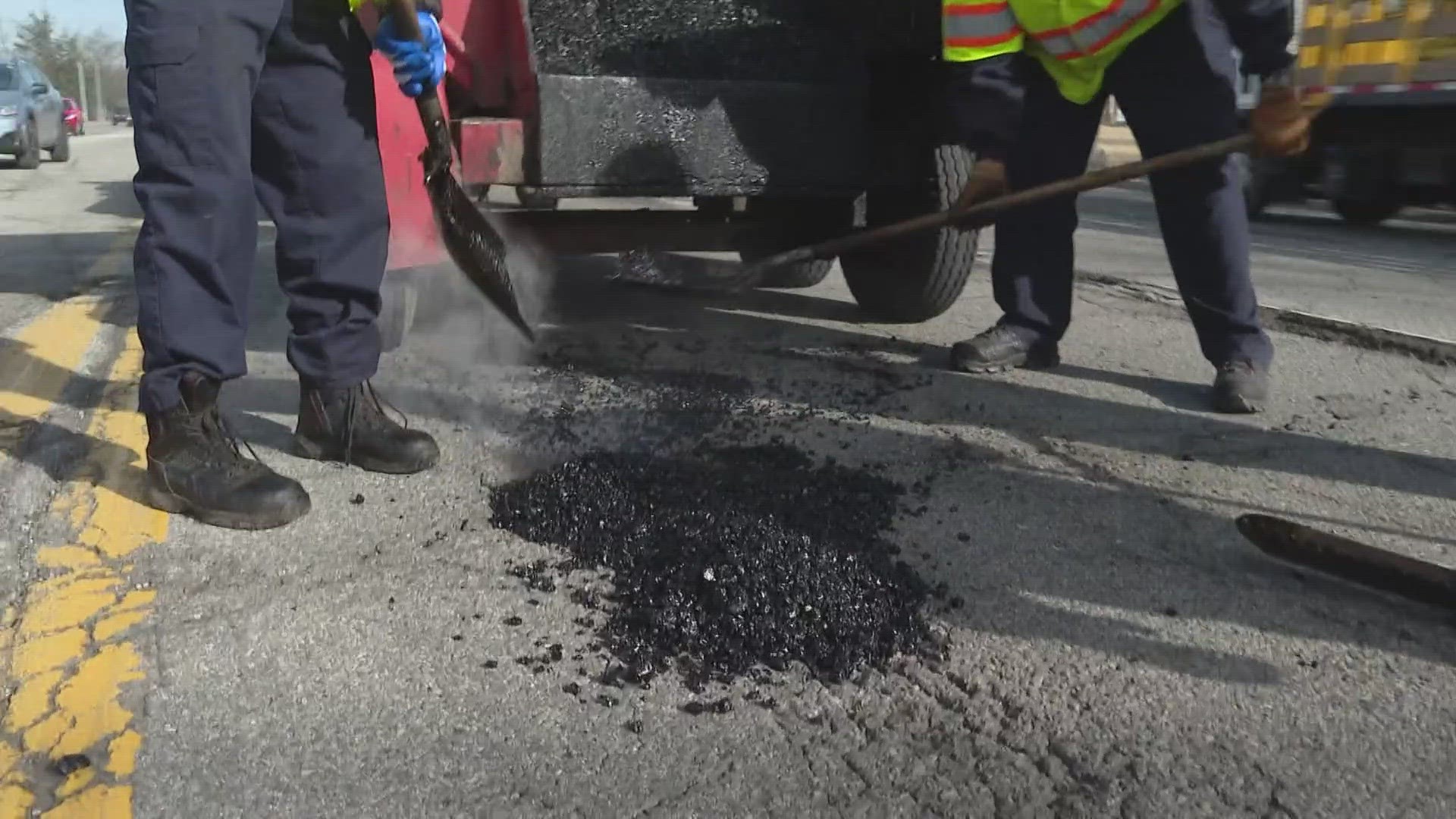Unlocking the Secrets of Hot Mix Asphalt Technology
Discovering the midsts of hot mix asphalt technology reveals a world where precise solutions and careful processes merge to shape our roads and framework. The combination of aggregates, binders, and fillers isn't simply a construction job however a strategic orchestration of toughness and effectiveness.
Relevance of Hot Mix Asphalt
Warm Mix Asphalt plays a critical function in modern-day facilities growth because of its durability and cost-effectiveness. As the most commonly utilized leading material for roadways, highways, and parking area, Warm Mix Asphalt provides a series of benefits that add to its importance in building tasks. One essential benefit is its ability to stand up to hefty traffic tons and rough weather, providing a reputable and durable surface for transportation networks. Furthermore, Warm Mix Asphalt is cost-effective in both initial building and lasting upkeep, making it a preferred choice for lots of framework tasks.
The longevity of Hot Mix Asphalt stems from its composition, which consists of aggregates, binder, and filler materials that are meticulously chosen and mixed to fulfill certain performance needs. Generally, the significance of Warm Mix Asphalt in facilities development can not be downplayed, as it continues to be a keystone of contemporary building and construction methods.
Components of Asphalt Mixes
The composition of asphalt mixes is composed of meticulously selected aggregates, binder, and filler products that are critical for achieving certain efficiency needs. Aggregates are the primary element of asphalt mixes, supplying toughness and stability. The binder, generally bitumen or asphalt concrete, holds the accumulations with each other and gives flexibility and resilience to the mix.
The combination and proportion of these elements play a considerable duty in establishing the top quality and efficiency of the asphalt mix. Designers carefully design the mix to meet particular requirements, thinking about elements like web traffic volume, climate conditions, and pavement lifespan. Proper option and harmonizing of accumulations, binder, and fillers are crucial for developing sturdy, durable asphalt sidewalks.
Combining and Production Techniques

As soon as the accumulations are selected, the binder, frequently asphalt cement, is included in bind the materials together. The binder's high quality and quantity substantially affect the mix's versatility, resistance, and stamina to environmental factors. Additionally, fillers like moisturized lime or Rose city concrete may be integrated to enhance specific characteristics of the asphalt mix, such as its workability or moisture resistance.
Throughout manufacturing, the aggregates and binder are heated, generally between 250-325 ° F(121-163 ° C ), to promote blending and make sure appropriate covering of the aggregates. The blending process should be comprehensive to achieve an uniform blend that promotes the wanted efficiency qualities of the asphalt. Various strategies, such as batch mixing or drum blending, are employed to attain top quality and consistent asphalt blends for construction tasks.
Aspects Affecting Asphalt Efficiency
Elements affecting asphalt efficiency encompass a variety of variables that influence the resilience, durability, and total quality of asphalt pavements. One vital factor is the high quality of products made use of in the asphalt mix.

Environmental problems also affect asphalt performance. Temperature level variants, wetness seepage, and web traffic lots can all impact the architectural integrity of the pavement. Layout considerations, such as sidewalk thickness and drain, are crucial in making sure the lasting performance of the asphalt sidewalk. By meticulously thinking about these service providers, factors and designers can enhance asphalt efficiency and boost the service life of pavements.
Lasting Practices in Asphalt Modern Technology

WMA permits for the production and positioning of asphalt mixes at lower temperature levels compared to typical hot-mix asphalt, resulting in decreased power consumption and greenhouse gas exhausts. The usage of porous asphalt blends can help reduce stormwater drainage issues by permitting water to infiltrate with the sidewalk and right into the ground, promoting all-natural water purification and recharge procedures.
Verdict
In conclusion, hot mix asphalt innovation plays a critical role in modern facilities advancement as a result of its durability and cost-effectiveness. By carefully balancing components, utilizing correct mixing strategies, and thinking her comment is here about numerous variables, designers can develop high-quality asphalt mixes that withstand heavy traffic loads and harsh weather. Embracing lasting techniques, such as making use of warm-mix modern technologies and recycled products, additionally improves the environmental friendliness of asphalt technology.
Blending and manufacturing methods in hot mix asphalt technology entail the exact combination and processing of accumulations, binder, and fillers to develop a long lasting and high-performance asphalt mix.Elements affecting asphalt efficiency include a range of variables that influence the Related Site toughness, durability, and overall top quality of asphalt pavements. Sustainable techniques in asphalt innovation encompass numerous efforts aimed at minimizing the environmental influence of asphalt manufacturing and paving processes. By including recovered asphalt sidewalk (RAP) and recycled asphalt roof shingles (RAS) into brand-new asphalt mixes, the market can considerably lower the usage of raw products and energy, while additionally reducing landfill waste.
WMA enables for the production and placement of asphalt blends at lower temperature levels compared to typical hot-mix asphalt, resulting in decreased power consumption and greenhouse gas exhausts.